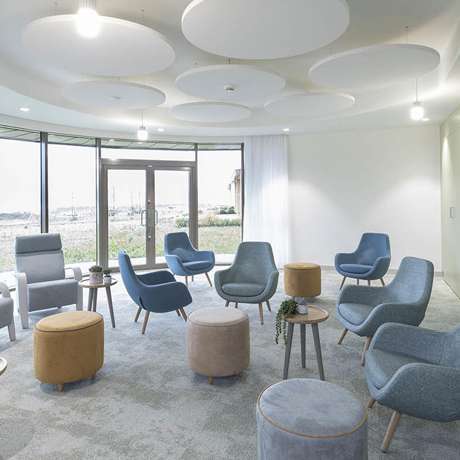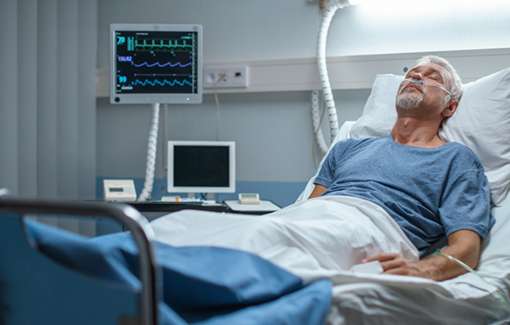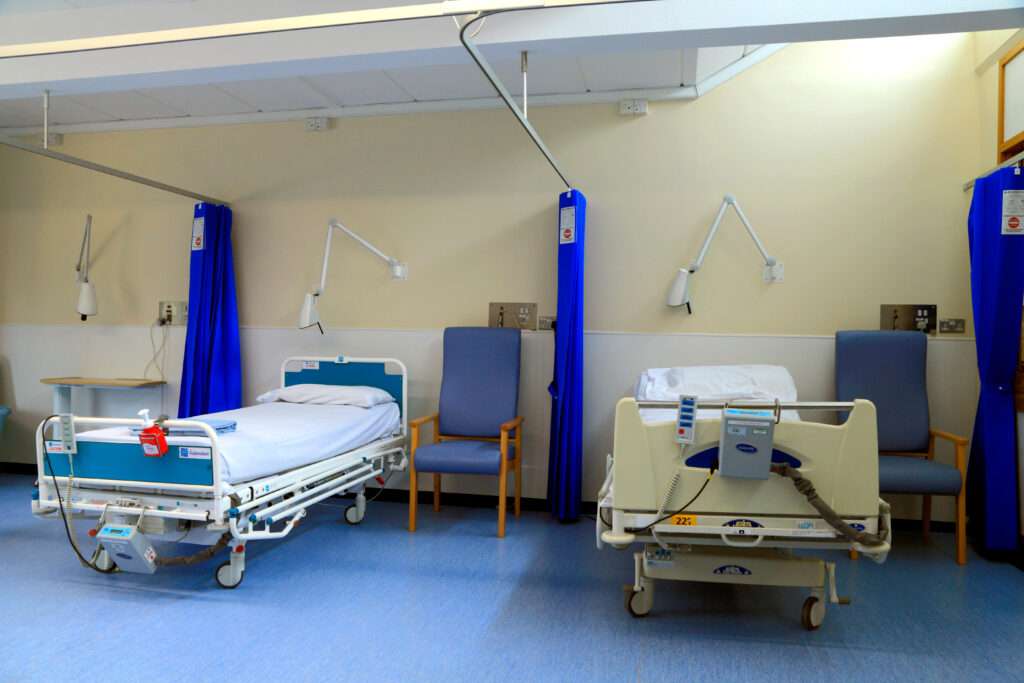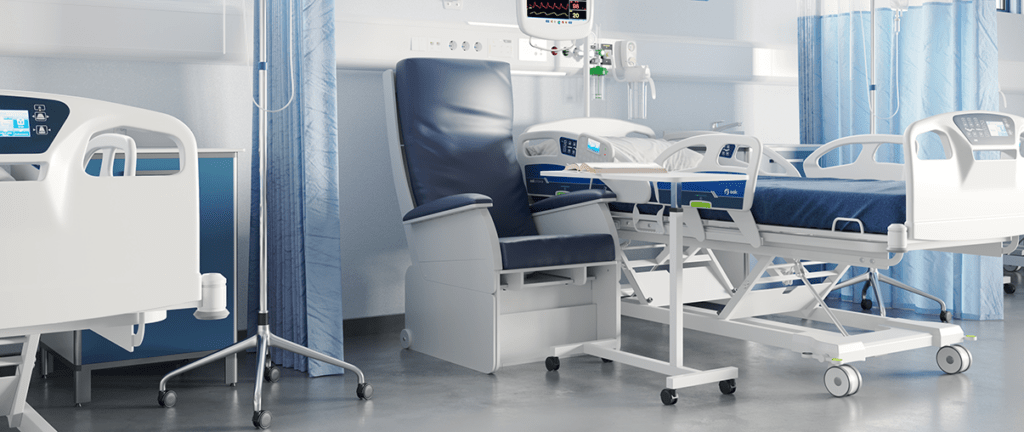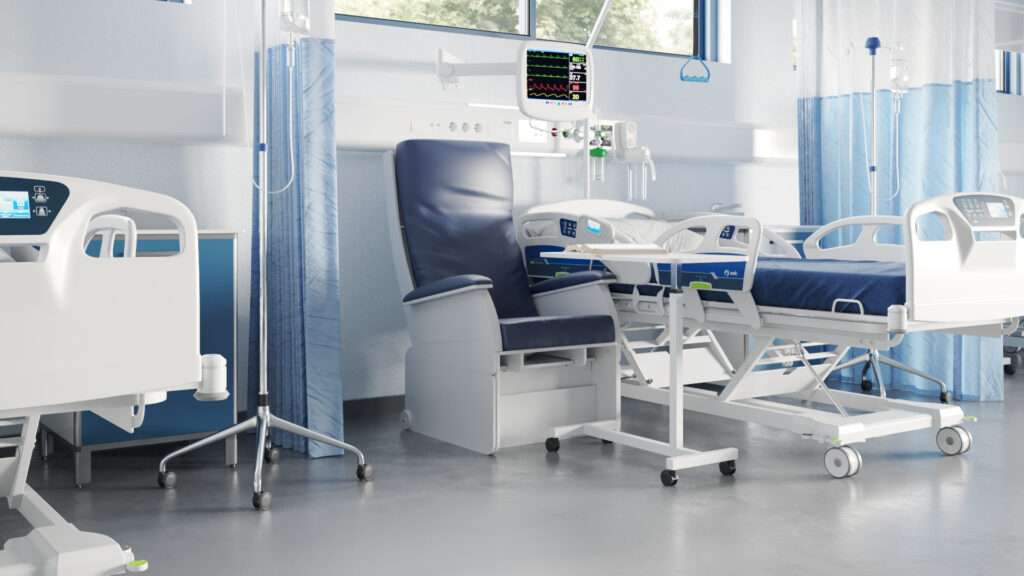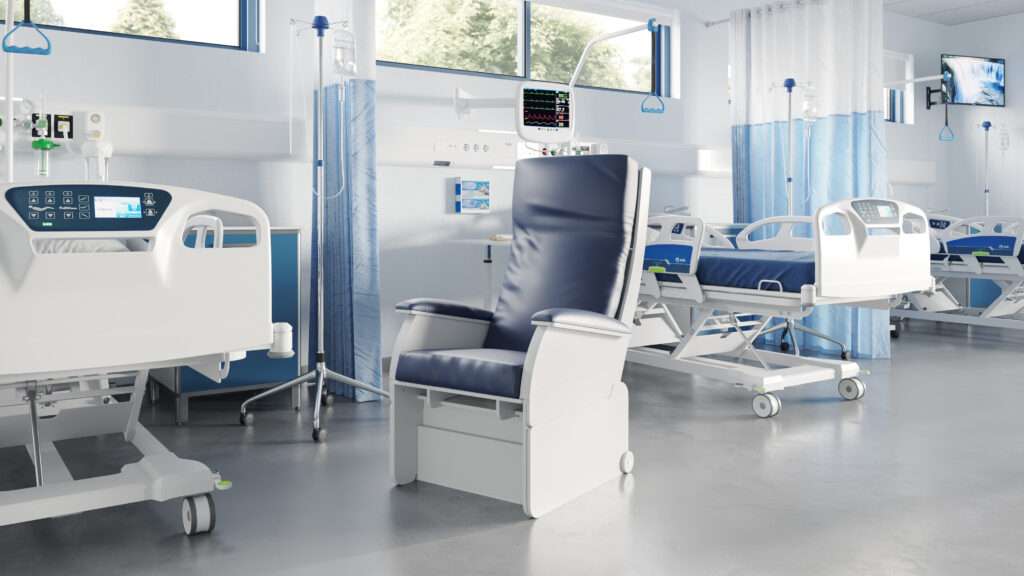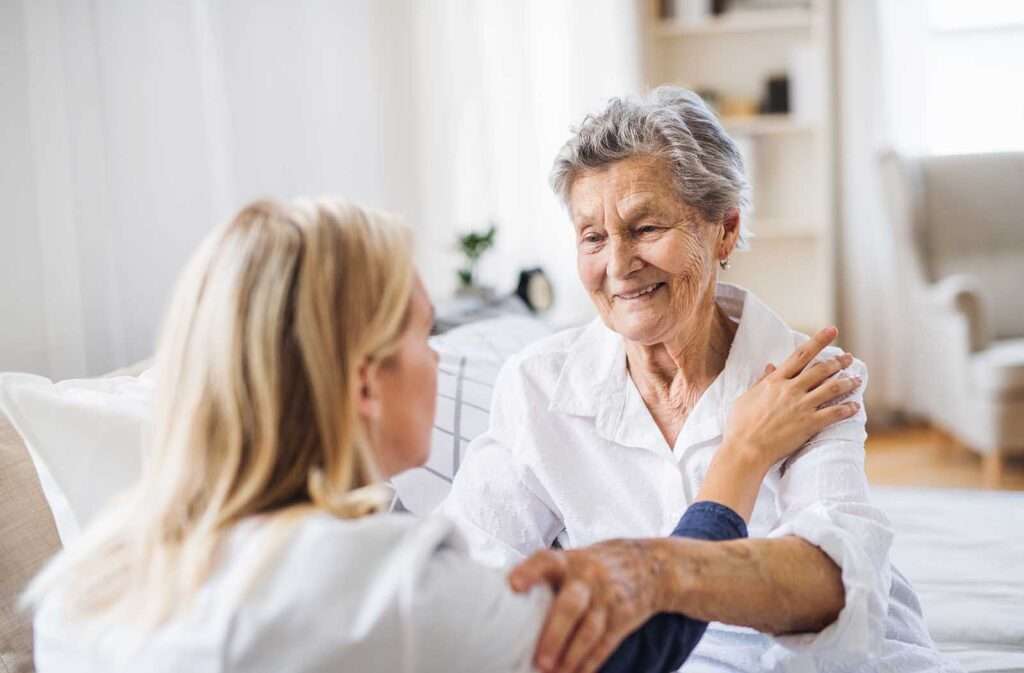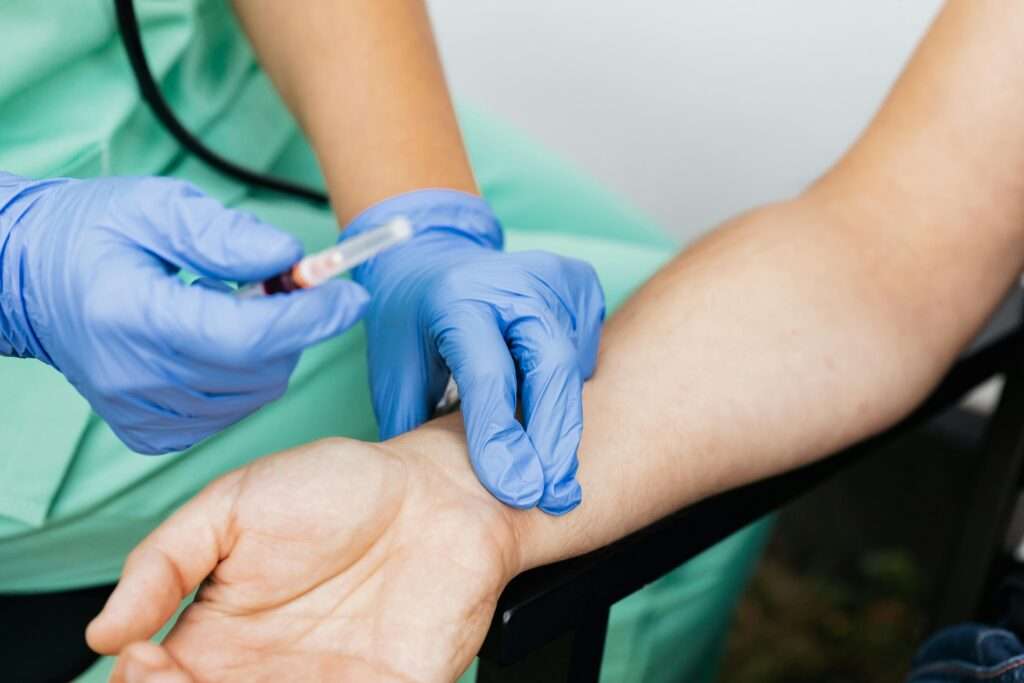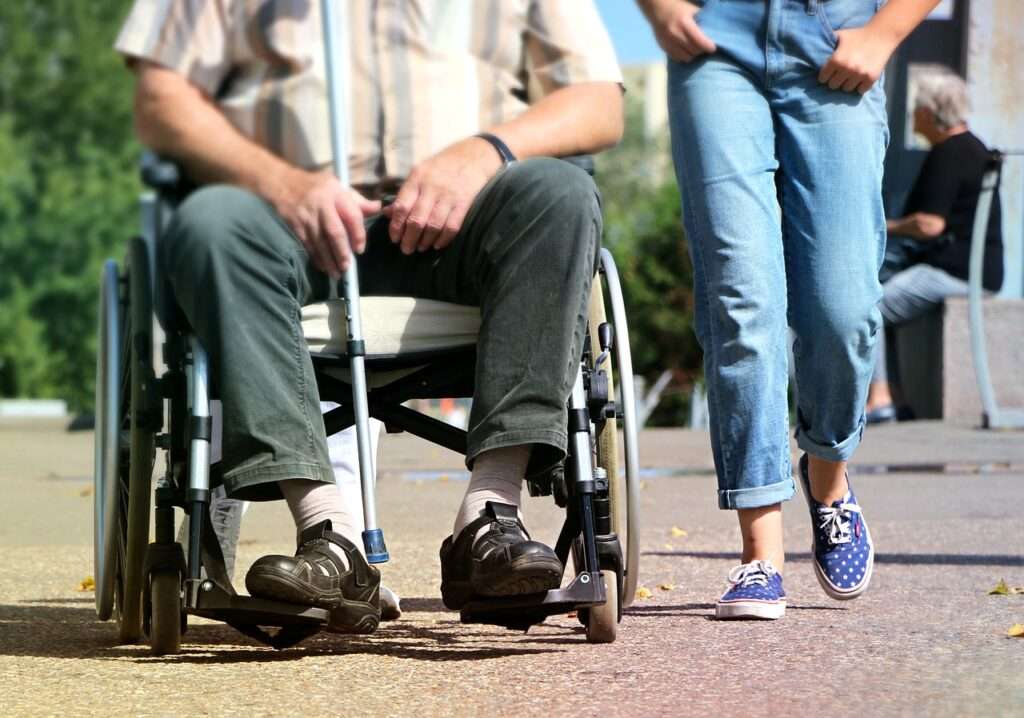Hospices provide palliative care for patients with terminal illnesses, their aim being to make the patient as comfortable as possible and make the most of their final days. The whole care experience is built around these objectives, with medical teams on hand to provide the best pain and symptom management, and events and social activities to provide an enriching experience.
Jump straight to...
- What legislation governs patient falls in hospices?
- How does the condition of the faller affect the lifting equipment used?
- Uninjured falls
- Raizer
- Mobile hoist
- Injured falls
- Lifting Cushions
- How do hospice aims and patient care goals affect falls response?
- Avoiding hospital admissions
- Palliative care
- What steps should hospice staff take in response to falls?
- Summary
What legislation governs patient falls in hospices?
The legislation that governs the use of lifting equipment in hospices in the UK is the Health and Safety at Work etc. Act 1974. This act requires employers to ensure the health and safety of their employees and others who may be affected by their work activities, including the safe use of lifting equipment.
The use of lifting equipment in hospices is further regulated by the Lifting Operations and Lifting Equipment Regulations (LOLER) 1998. LOLER requires that all lifting equipment used in the workplace, including in hospices, be subject to regular inspection, maintenance, and testing by a competent person. This applies to all types of lifting equipment, such as hoists, slings, and mobile lifting equipment.
Hospices must also comply with the Manual Handling Operations Regulations 1992, which require employers to avoid the need for manual handling where possible and, where it cannot be avoided, to assess and reduce the risk of injury to employees and others.
How does the condition of the faller affect the lifting equipment used?
The hospice staff will have detailed knowledge of the patient’s condition as part of their care package and treatment plan. With this in mind, it is important to tailor the falls response to the patient’s condition. Critically, whether the patient is injured or not as a result of the fall will have a significant impact on the equipment used.
Uninjured falls
Raizer
The Raizer is a unique falls lifting device with minimal hassle, no manual handling is required, and provides a safe and dignified experience for the faller. It Raizer assembles quickly around the patient and lifts them smoothly to their feet in a safe, calm manner.
Main benefits:
- Very simple to use, requires no formal manual handling training
- 60-second lift with remote handset, performs 60 lifts on a single charge
- Manual version available with no battery requirement
Mobile hoist
Using a mobile hoist and sling is a very safe and secure way of moving a fallen person, albeit a slightly protracted process. Training is required to assemble the sling and hoist correctly, which involves rolling the uninjured patient onto their side.
Main benefits:
- Mobile hoists have multiple safety mechanisms to reduce risk and keep the patient safe
- They are Ideal for patients with limited mobility or unable to stand unaided
Injured falls
Lifting Cushions
Lifting cushions or flat lift devices are ideal for lifting patients who are potentially injured, as they provide a supportive inflatable base and spread the weight of the patient. Flat-lift devices are designed to keep patients in a lying position, so have a wider surface area and involve transferring the patient onto the cushion from the floor, which is done using a separate inflatable slide section.
Main benefits:
- High user weight
- Prevent hip flexion
- Made from durable material
How do hospice aims and patient care goals affect falls response?
As hospices provide a patient-centred care package built around the needs of the individual, the equipment they use for falls will need to very much correlate around these needs.
Avoiding hospital admissions
One of the aims will be to provide all treatment and symptom management within the hospice itself without having to admit the patient into hospital. In the event of a fall, an ambulance callout will inevitably involve admission into hospital. This could be a step back for the patient and put them at risk of infection if they have weak immunity.
Palliative care
End-of-life care is a detailed process and centres around maximizing the person’s wellbeing, and giving them dignity and respect in all aspects of care and treatment. It is a holistic plan and will take into account the personal needs of the individual, their goals, preferences and personality.
As well as general risk assessments for the different lifting equipment outlined above, falls response may well involve an individual risk assessment to be drawn up around the patient’s conditions, and them and their family’s preferences if they should suffer a fall.
What steps should hospice staff take in response to falls?
Falls can be a common occurrence in hospice settings, so it’s important to address them promptly to ensure the safety and well-being of patients. Here are some steps that can be taken to deal with falls in hospices:
- Assess the patient’s condition: Check the patient for any injuries or signs of distress. If the patient is unconscious or unresponsive, call for medical assistance immediately.
- Call for help: If the patient is able to communicate and appears to be okay, call for help from a healthcare provider or caregiver.
- Document the incident: It’s important to document the incident in the patient’s medical records, including the time and circumstances of the fall, any injuries sustained, and any actions taken.
- Review the cause of the fall: Try to determine what caused the fall, such as a slippery floor, an obstacle in the patient’s path, or medication side effects. Addressing the underlying cause can help prevent future falls.
- Prevent future falls: Implement strategies to prevent future falls, such as providing non-slip footwear, removing obstacles, or using bed rails. Consider enlisting the help of physical or occupational therapists to assess the patient’s mobility and recommend appropriate interventions.
- Communicate with the patient and their family: Be sure to communicate with the patient and their family about the fall, including any injuries sustained and the steps being taken to prevent future falls.
Summary
Hospices deliver a superlative level of care and do amazing work for clients and their families. As a group we have been pleased to support the work of hospices over many years through donations and equipment fit-outs.
When responding to falls in a hospice a wide range of factors will need to be taken into account, but most importantly focusing on the physical condition of the patient, ensuring their comfort and wellbeing, and aligning with the patient’s holistic care plan and preferences.





